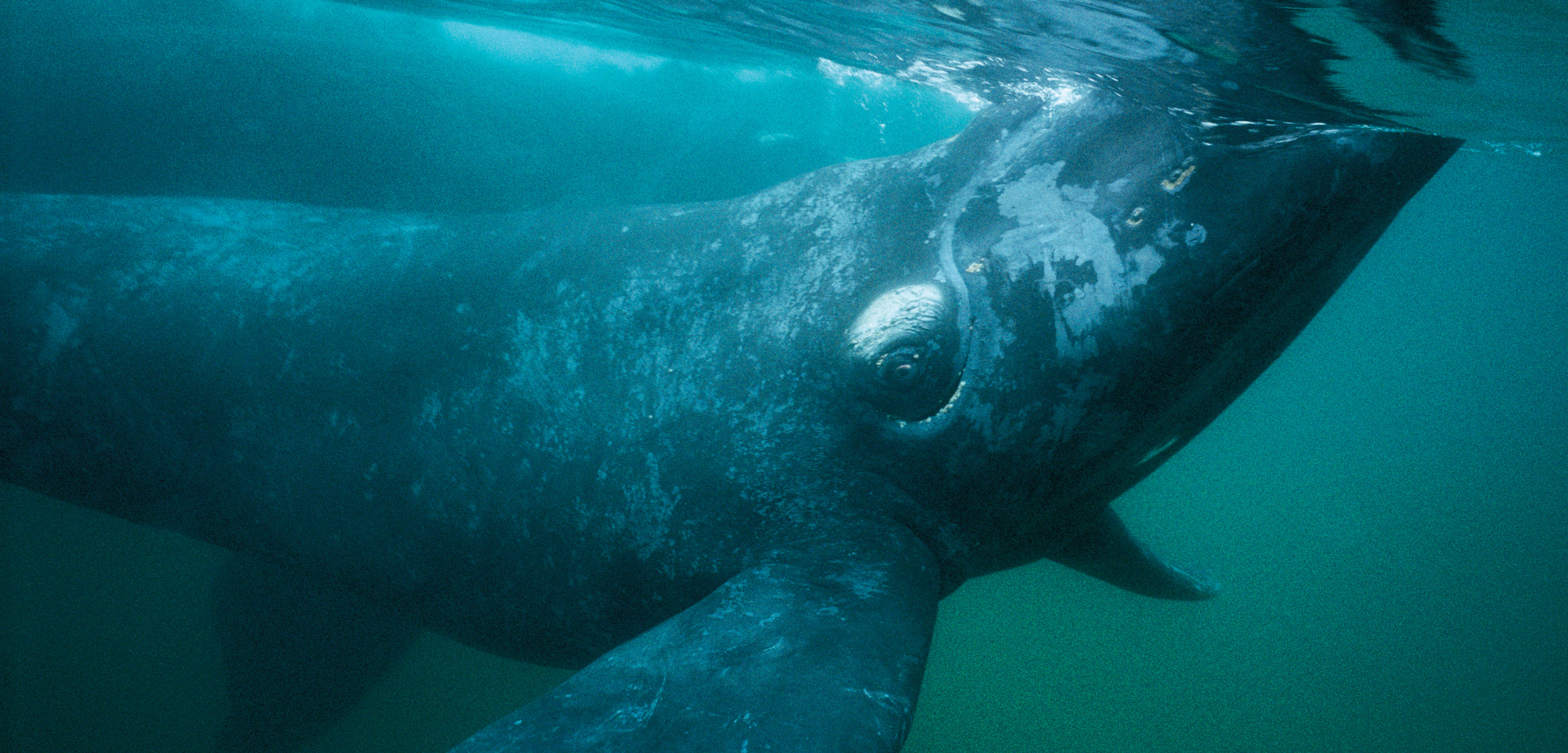Industrial Whaling’s Incredibly Long Tail
For some whale populations, even 100 years is not long enough to recover.
Article body copy
In the first part of the 20th century, industrial whalers hunted a range of species to near extinction. But almost 100 years later, many of those populations—humpbacks, blue whales, southern right whales, and others—are still hurting. And even after 100 years of protection, many of these whale populations will still be less than half the size they were before the whaling era.
That’s the finding of a new study on southern hemisphere baleen whales. Researchers estimated how the populations of five whale species will change by the year 2100 by calculating various data, including: numbers from the historical whale catch; past and present population estimates; and estimated future abundances of phytoplankton and krill, the whales’ primary food sources.
“We wanted to look at how both the krill and the whales respond to changes in the environment—separately, and also linked together,” says Viv Tulloch, a marine ecosystem modeler at the Queensland Bioscience Precinct and the University of Queensland in Brisbane, Australia. That’s because the abundance of whales’ food could play a role in their ability to recover.
Since laws were passed protecting whales from hunting in the 1960s, ’70s, and ’80s, some species have thrived. Humpbacks, which mature more quickly and have more calves than other species, are predicted to fully recover by 2080, according to the study. Slower-growing fin whales, on the other hand, are faring poorly. In the Atlantic/Indian Ocean region, the fin whale population is expected to rebound to less than a quarter of its pre-exploitation size by the turn of the next century.
Though whales’ recoveries have been modeled before, Tulloch says this is the first time researchers have included relatively new data from the International Whaling Commission (IWC) that shows that Soviet whaling vessels illegally harvested as many as 100,000 Antarctic whales from the 1940s to 1970s.
“All this came to light in the last 10 years or so, but the data was not verified by the IWC until the last couple of years,” Tulloch says. Next, she plans to update her model with estimates on how krill and whale populations might be affected by environmental changes like warming oceans and sea ice loss.
While the end of large-scale industrial whaling helped whale populations overall, people may bring a new threat.
Over the next 10 years, interest in harvesting krill from the Antarctic as a source of food for humans is likely to increase, says Doug Butterworth, a marine resource assessment and management scientist at the University of Cape Town in South Africa, who created a similar krill-whale population model in 2006. When that increase in the krill fishery happens, agencies like the Commission for the Conservation of Antarctic Marine Living Resources (CCAMLR) will need to know how that might affect whales—and, conversely, if whale populations continue to grow, how that might affect the abundance of krill.
These kinds of models will be essential to CCAMLR in the future in setting whale-friendly management practices for the krill fishery, Butterworth says.

